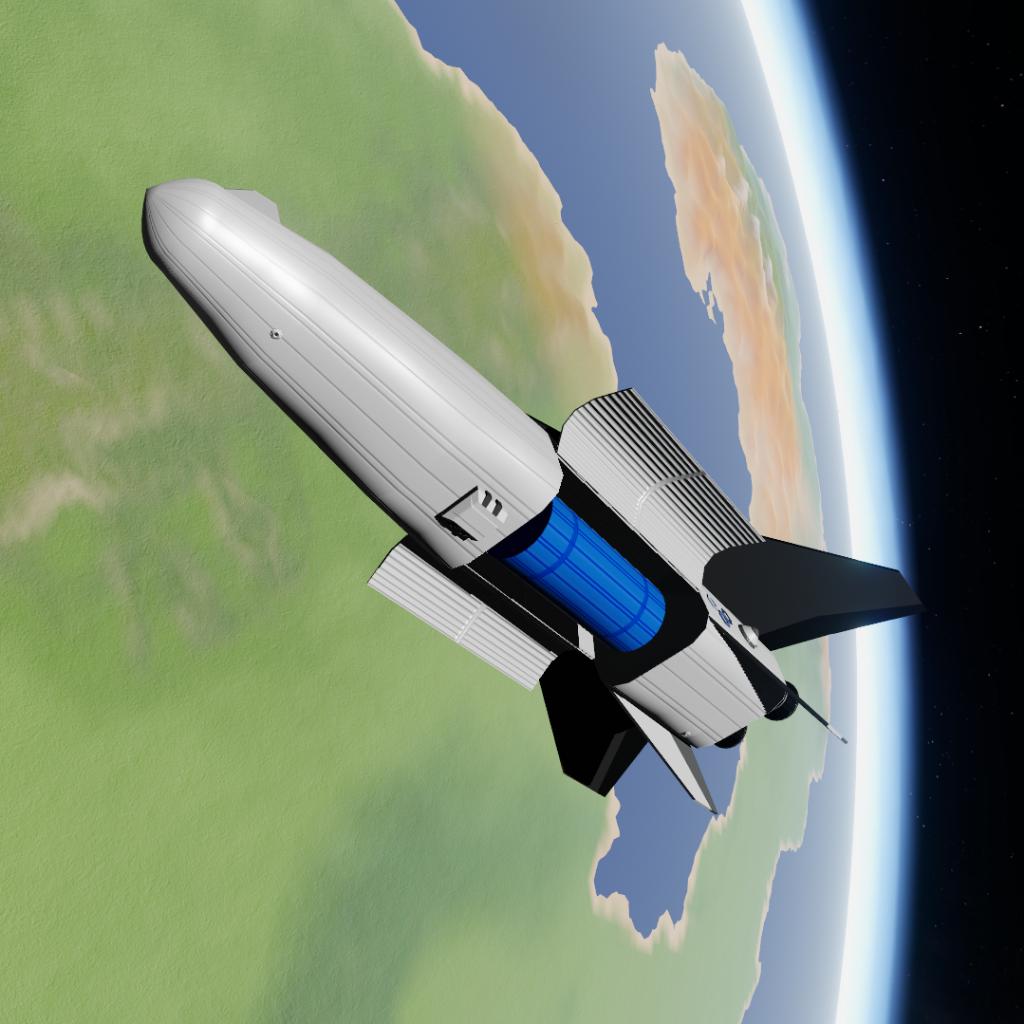
The Challenger spaceplane was developed by Iridium Aerospace on the request of the Valfross government, in order to drop the cost and turnaround speed of crew launches (which, at the time, was handled by the completely expendable Resound booster and tiny Spirit capsule). It is a unique inline two-stage design, which can takeoff and land from any runway, and the latest iterations can be turned around in eight hours for less for a million dollars per flight. Each flight carries up to ten people.
A cargo version was also developed for launching of small satellites and scientific payloads for cheap, since the capability was available. Each flight can deliver five tons to low orbit.
User Manual
Comes with a test tank for payload. You may want to load your own payload.
For accurate Delta-V readings, set the command chip in the payload bay as primary. Remember to set it back when you're done, because apparently rocket control doesn't work for planes.
Ascent
- Pitch up to 45 degrees on takeoff.
- Level off at 2,000m ASL and accelerate.
- At 700m/s, pitch up to 5d. Level off at 7,000m ASL.
- At 900m/s, pitch up to 60d.
- When apoapsis hits 45,000m, activate the booster engine. Burn until apoapsis hits 100km, and then pitch over to 0d.
- Stage when the engines burn out. Wait for the stage separation sequence to complete.
- Set pitch heading to 0d (if you haven't already) and burn to orbit.
8 Switch to the first stage immediately after achieving a stable orbit to recover it.
First Stage Recovery
- Cut chutes at 300m/s and level off.
- Set engines to 25%.
- Fly back to the runway.
Landing gear is automatically deployed on <100m/s and <100m AGL, or <10m AGL.
Second Stage Recovery
- Burn to 40km apoapsis.
- Deploy chutes before entering the atmosphere. This will keep temperatures manageable, since chutes can't burn up?
- Cut chutes whenever you feel like it. 500m/s is good.
- Land. ¯_(?)_/¯
TL;DR:
- Gain speed in the lower atmosphere.
- Convert that speed to altitude - the higher the better.
- Once you've done that, it's pretty straightforward to achieve orbit.
There's a lot of margin on this craft; though it's rated for five tons to orbit, it can probably lift six or seven.
Notes
I originally started this to validate a design in another game, and it ballooned into a proper vehicle.
The jet engines make up 85% of the vehicle's unit cost. Using multiple smaller engines cuts their cost clear in half and adds more performance to boot, but for some reason swapping the engines out causes the vehicle to spin out when the booster engine is turned on.
It's frustrating.
Upvotes are important. 👍
GENERAL INFO
- Created On: Windows
- Game Version: 0.9.404.0
- Price: $71,646k
- Number of Parts: 133
- Dimensions: 6 m x 17 m x 41 m
PERFORMANCE
- Total Delta V: 764m/s
- Total Thrust: 2.4MN
- Engines: 5
- Wet Mass: 1.29E+5kg
- Dry Mass: 40,227kg
STAGES
| Stage | Engines | Delta V | Thrust | Burn | Mass |
|---|---|---|---|---|---|
| 1 | 2 | 0m/s | 0N | 0s | 1.29E+5kg |
| 2 | 1 | 764m/s | 1.6MN | 56s | 1.29E+5kg |
| 4 | 0 | 0m/s | 0N | 0s | 74,121kg |










s i m p l e t e x t u r e